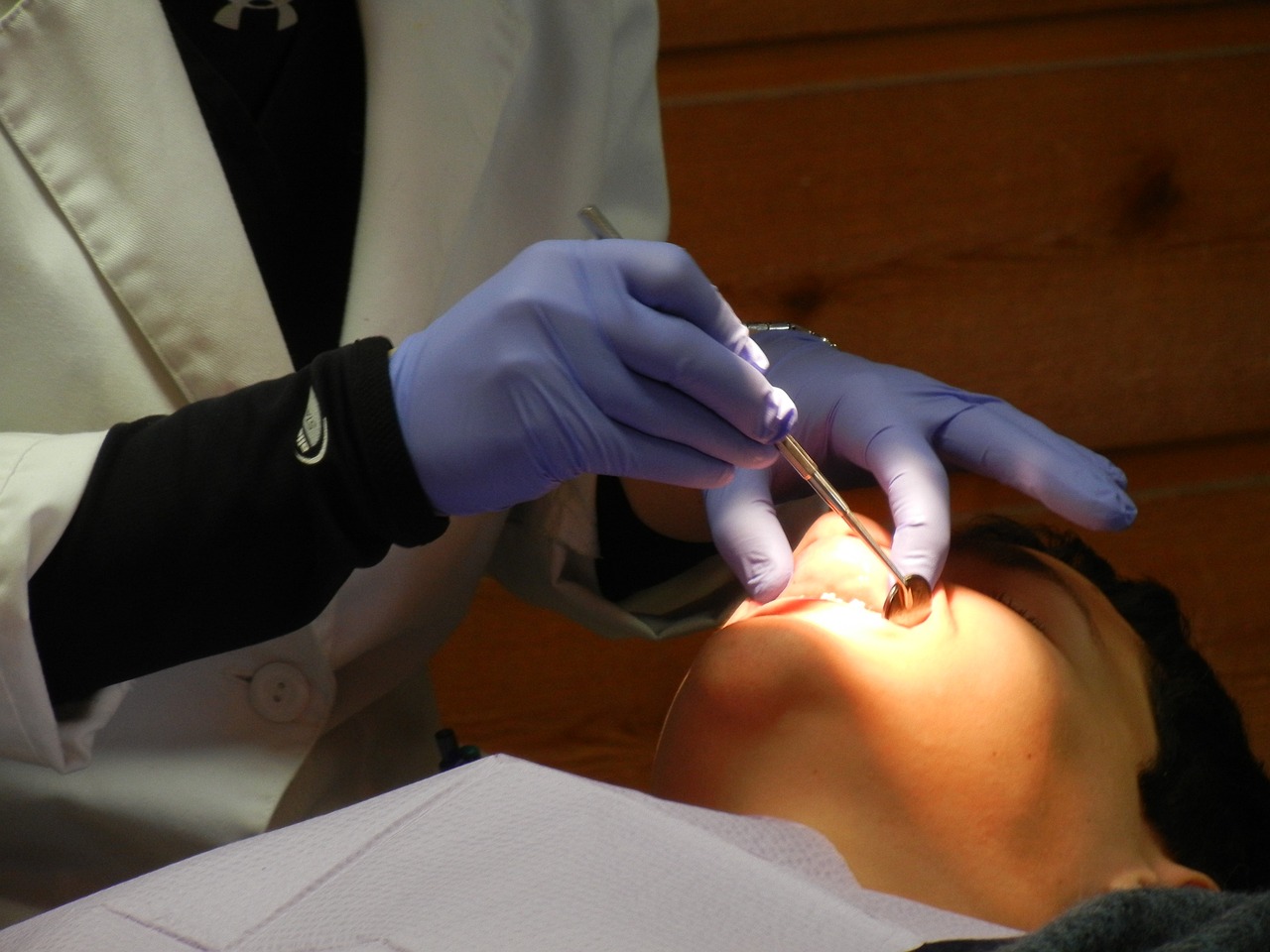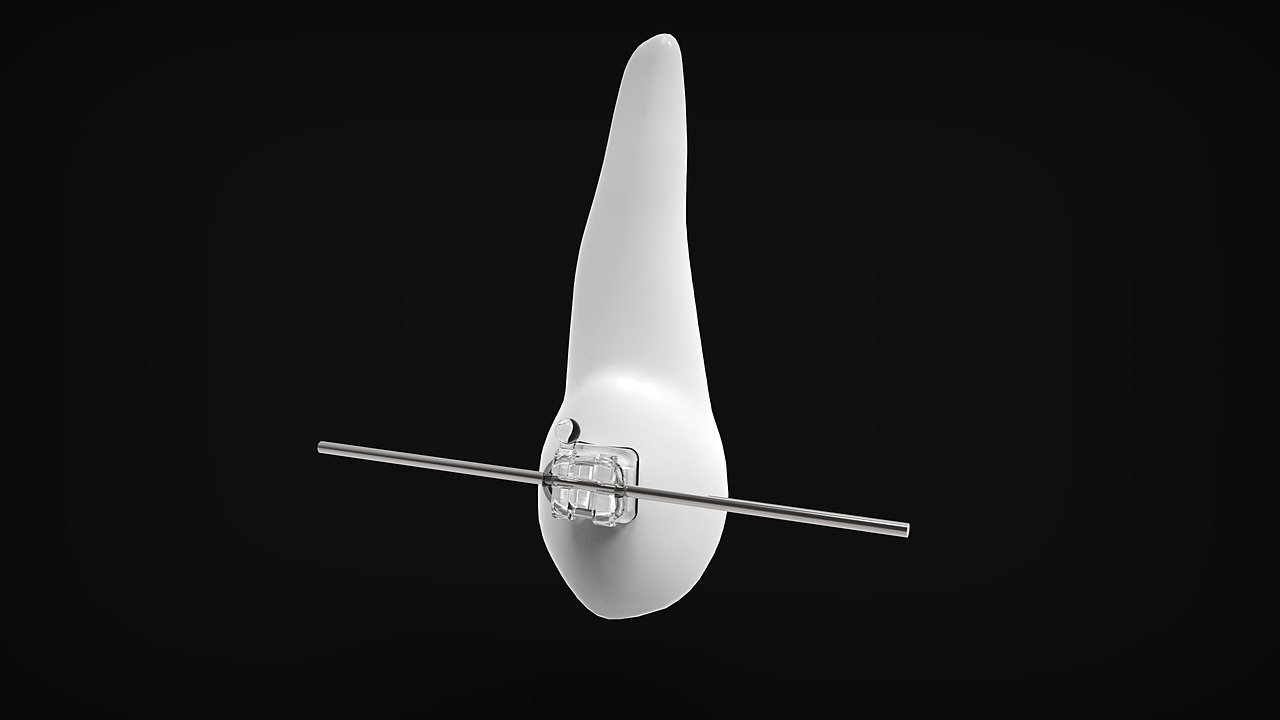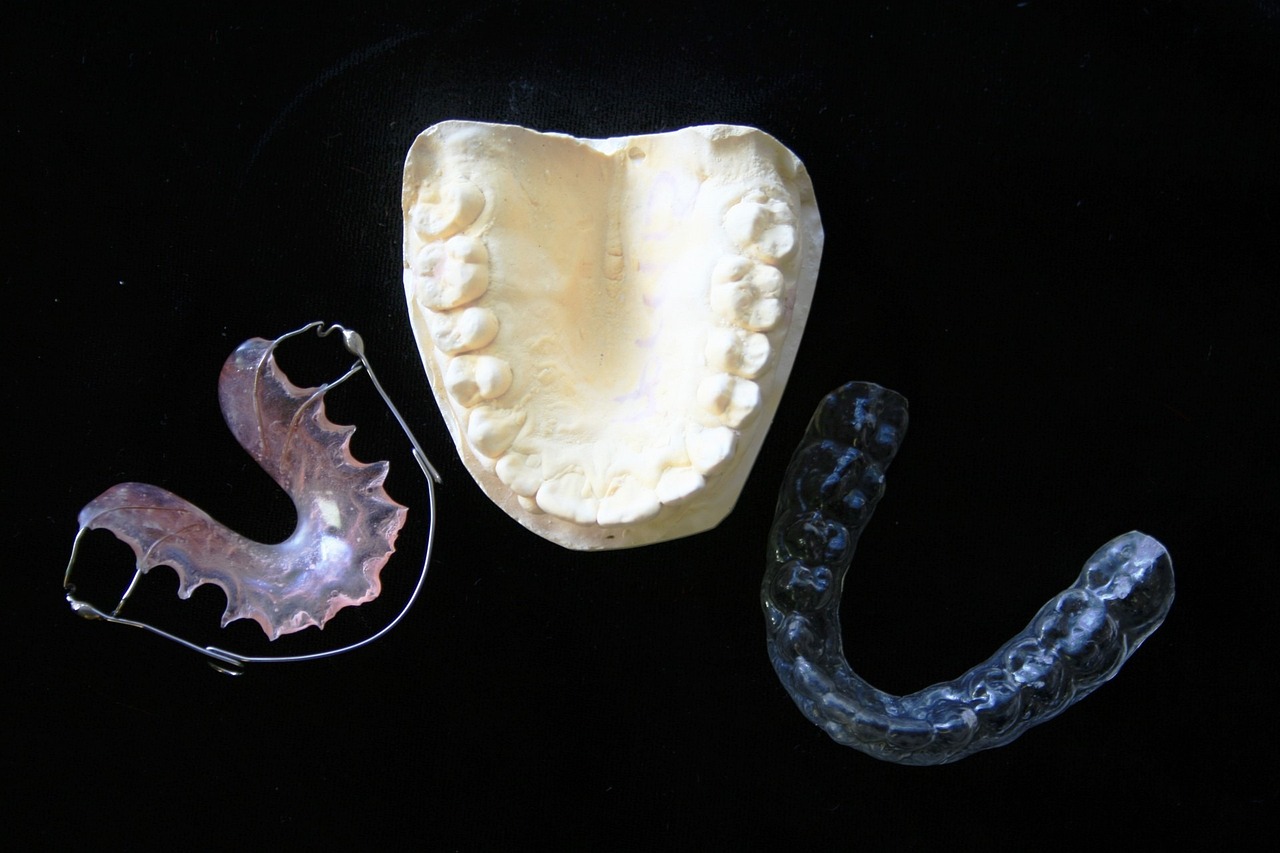Unveiling the Era: How the 1960s Redefined Orthodontics

Welcome to an exciting exploration of the 1960s, a decade that brought about significant changes in the world of orthodontics. Let us embark on this journey to understand how this vibrant era reshaped the future of dental care.
The Cultural Shift
The 1960s was not just about music and fashion; it was a time when societal attitudes toward health and beauty began to evolve. People started to embrace the idea that having a perfect smile was not just a luxury but a necessity. This cultural shift laid the groundwork for advancements in orthodontic practices.
Technological Innovations
The introduction of new materials and techniques revolutionized the field of orthodontics during this decade. Let’s take a closer look at some of these innovations:
- Introduction of Stainless Steel: Traditional braces made from gold and other metals were gradually replaced by stainless steel, which was more durable and cost-effective.
- Changes in Bracket Design: The development of smaller and more efficient brackets made treatment less noticeable and more comfortable for patients.
- Wire Improvements: The introduction of heat-activated wires allowed for more effective tooth movement, reducing the need for frequent adjustments.
Patient-Centric Approaches
With an increased focus on patient satisfaction, orthodontists began to adopt more patient-centric approaches. This included:
- Improved Communication: Orthodontists started to engage more with their patients, explaining procedures and setting realistic expectations.
- Aesthetic Options: Clear braces and other less noticeable options began to emerge, catering to the growing demand for aesthetic treatments.
Educational Advancements
During the 1960s, orthodontic education also experienced transformations. Many orthodontic programs began to incorporate:
- Hands-on Training: Practical experience became a vital part of orthodontic education, ensuring that new practitioners were well-prepared.
- Research and Development: Increased focus on research led to better understanding of orthodontic principles and patient care.
The 1960s marked a turning point in orthodontics, setting the stage for innovations that continue to benefit patients today. The combination of technological advancements and a focus on patient care transformed the practice into what we recognize now.
As we reflect on this transformative decade, consider how these changes have impacted you or your loved ones. Perhaps you or someone you know has experienced the wonders of modern orthodontic care. Share your stories!
Braces Beyond Aesthetics: The Impact on Health and Confidence

Understanding the Transformation
The 1960s marked a pivotal decade for orthodontics, as braces evolved from a mere aesthetic enhancement to a crucial component of overall health. This change was not just about achieving a perfect smile; it was about understanding the profound impact of oral health on general well-being.
Health Benefits of Braces
Braces are more than just a fashion statement. They play a significant role in:
Correcting Misalignments: Misaligned teeth can lead to serious dental issues, including decay and gum disease.
Improving Chewing Function: Proper alignment aids in effective chewing, which is essential for digestion.
Enhancing Oral Hygiene: Straight teeth are easier to clean, reducing the risk of cavities and other oral health problems.
The Confidence Boost
Beyond health, braces have a remarkable effect on self-esteem. Many individuals report feeling:
More Confident: A straight smile can enhance one’s appearance, leading to more social interactions.
More Engaged: Improved confidence can encourage individuals to participate in activities they might have avoided.
Interactive Table: Health vs Aesthetic Benefits
| Benefit | Health Impact | Aesthetic Impact |
|---|---|---|
| Improved Bite | Reduces jaw strain | Enhances smile symmetry |
| Reduced Risk of Tooth Decay | Prevents cavities | Boosts smile appeal |
| Better Speech | Improves articulation | Increases confidence |
| Enhanced Digestion | Aids in food breakdown | Promotes overall health |
As the 1960s revolutionized orthodontics, it brought with it a deeper understanding of the relationship between braces, health, and confidence. The journey through this transformative era highlights that braces are not just about aesthetics; they are a vital tool for fostering both physical and mental well-being.
The Pioneers of Change: Meet the Innovators Who Transformed Braces

In the 1960s, a remarkable transformation took place in the world of orthodontics. This era birthed innovations that reshaped the way braces were perceived and utilized. Let’s take a closer look at the pioneers who led this revolution.
1. Dr. Edward Angle: The Father of Modern Orthodontics
Dr. Edward Angle is often recognized as the father of modern orthodontics. His innovative concepts and classification of malocclusions laid the groundwork for future orthodontic practices. Angle’s introduction of the first standardized orthodontic brackets revolutionized treatment methods.
2. Dr. Larry Andrews: The Andrews Straight Wire Appliance
Dr. Larry Andrews took orthodontics a step further with his invention of the Straight Wire Appliance. This system simplified treatment and enhanced the aesthetics of braces. Can you imagine braces that are easier to fit and less noticeable? Andrews made that possible!
3. Dr. William Proffit: Advancing Orthodontic Education
Dr. William Proffit significantly influenced orthodontic education during the 1960s. His pioneering work in understanding dental occlusion and facial growth patterns has shaped the curriculum for future orthodontists. He emphasized the importance of comprehensive patient assessment, which is still vital today.
4. Dr. Charles Burstone: The Concept of Biomechanics
Dr. Charles Burstone introduced groundbreaking ideas in biomechanics, focusing on how forces applied to teeth can impact movement and alignment. His research helped orthodontists understand the science behind tooth movement, leading to more effective treatments.
5. The Role of Technology
During this transformative decade, technology played a crucial role. The introduction of new materials, such as stainless steel, allowed for stronger and more durable braces. Additionally, the advent of computer technology began assisting orthodontists in planning treatments more precisely.
6. Aesthetic Changes: From Bulky to Sleek
Throughout the 1960s, braces underwent significant aesthetic changes. Orthodontists started to focus on making braces less intrusive. Patients began to notice a shift from bulky metal bands to more streamlined and less noticeable options, paving the way for the ceramic braces we see today.
The 1960s marked a pivotal moment in orthodontic history, driven by the passion and innovation of these key figures. Their contributions not only transformed braces but also improved the lives of countless individuals seeking dental correction. As we reflect on this era, we can appreciate how far orthodontics has come, thanks to the visionaries who paved the way.
From Metal to Magic: The Evolution of Orthodontic Technology
Introduction: The Changing Face of Orthodontics
The 1960s marked a pivotal era in orthodontic technology. As you reminisce about those days, you might recall the significant shift from traditional metal braces to more innovative and less conspicuous options. This transformation not only changed the way braces looked but also how they functioned, making orthodontics more accessible and effective.
A Glimpse into the Past: The Era of Metal Braces
Let’s take a moment to reflect on the classic metal braces that many of you may have experienced:
| Feature | Description |
|---|---|
| Material | Stainless steel, known for its durability |
| Appearance | Bulky and noticeable on the teeth |
| Comfort | Often uncomfortable and required frequent adjustments |
| Effectiveness | Highly effective but involved a lengthy treatment process |
The Shift Begins: Introduction of New Materials
As the 1960s progressed, orthodontists began to explore new materials that would revolutionize the experience:
Plastic Brackets: These were lighter and less noticeable than metal brackets, appealing to many patients.
Elastic Bands: Introduced to replace the traditional wire ties, they were more comfortable and offered a variety of colors.
From Metal to Magic: Key Innovations
Several groundbreaking innovations took center stage during this decade:
Self-Ligating Braces: These braces eliminated the need for elastic ties, reducing friction and improving comfort.
Clear Aligners: Though they gained popularity later, the groundwork was laid in the 1960s for removable options that would become prevalent in the 1990s.
Advanced Imaging Techniques: The introduction of panoramic X-rays allowed orthodontists to better diagnose and plan treatments.
Interactive Reflection: Your Experience
Now, let’s engage in a little reflection. Think about your own experiences or those of your friends and family:
What type of braces did you or your loved ones wear?
How did the appearance and comfort of braces affect your confidence?
Did you notice any improvements in orthodontic technology over time?
The Impact of Change: A New Era of Orthodontics
The changes made in the 1960s set the stage for the future of orthodontics:
Accessibility: More patients were able to seek treatment due to improved comfort and aesthetics.
Acceptance: Braces became a more accepted part of adolescence, leading to better oral health for generations.
Conclusion: Embracing the Future
As we look back at the evolution of orthodontic technology, it’s clear that the journey from metal to more advanced options was significant. The innovations of the 1960s not only transformed smiles but also paved the way for the future of orthodontics. Embrace the magic of these changes and consider how far we’ve come in the pursuit of perfect smiles.
Embracing Change: Personal Stories of Transformation Through Braces
In the vibrant decade of the 1960s, a remarkable transformation took place in the world of orthodontics. This era not only brought about innovative advancements in braces technology but also changed the lives of many individuals who embraced these transformations. Here, we share personal stories that highlight the profound impact braces had on their journeys.
The Journey Begins
Mary’s Story: At the age of 12, Mary felt self-conscious about her crooked teeth. “I remember the day I got my braces. I was nervous but excited. I wanted to smile without feeling embarrassed,” she recalls. The metallic brackets and wires were a new experience, but the support from her family made it easier. “Every time I looked in the mirror, I felt like I was on a journey to becoming the best version of myself.”
Challenges Along the Way
John’s Experience: John’s journey was not without its challenges. “I had to deal with the discomfort and the teasing at school. But I learned to embrace it. I told myself that this was temporary,” he shares. His determination paid off, and by the time he was 15, he had a smile that lit up the room. “It was worth every moment of discomfort. I felt a wave of confidence wash over me once the braces came off.”
The Support System
Linda’s Reflection: Linda emphasizes the role of her orthodontist as a mentor. “Dr. Adams was not just an orthodontist; he was a guide through my teenage years. He encouraged me to stay positive and reminded me of the beautiful smile that awaited me at the end of the journey,” she recalls. This support made a significant difference in her experience.
The Big Reveal
Tom’s Transformation: The day Tom got his braces removed was monumental. “I was filled with anticipation, nervousness, and excitement all at once. When I saw my new smile, I felt like a new person. My confidence skyrocketed!” He adds, “It wasn’t just about the appearance; it was about how I felt inside. I learned to embrace who I really was.”
A Lasting Impact
Reflections from the Group: Years later, these individuals gather to share their stories. They all agree on one thing: Braces were a catalyst for change in their lives. “It wasn’t just about fixing teeth; it was about finding ourselves, gaining confidence, and embracing change,” says Mary.
As we reflect on these personal stories, it becomes clear that the journey through braces in the 1960s was more than just a dental procedure. It was a transformative experience that shaped individual identities and fostered a sense of community among those who shared similar struggles. Embracing change is not always easy, but as these stories illustrate, it can lead to beautiful outcomes.
The Social Shift: How Braces Became a Fashion Statement in the 1960s
The 1960s were a decade of profound change, not just in politics and culture but also in personal aesthetics. One of the most fascinating transformations during this time was the perception of braces, which evolved from a mere orthodontic necessity to a fashion statement. Let’s explore how this shift occurred!
Initially, braces were often seen as a source of embarrassment, especially among teenagers. However, with the advent of the counterculture movement, attitudes began to change. Young people started to embrace individuality and self-expression, and braces became a symbol of uniqueness.
During this era, celebrities began to sport their braces with pride. Can you recall the images of young stars flashing their smiles? This visibility helped to normalize braces and even made them desirable. The artistic expression of the time influenced the design of braces, leading to the introduction of colorful elastics and creative styles.
Moreover, advertisements began to feature models with braces, showcasing how they could be integrated into one’s personal style. This shift was not just about aesthetics; it was also about acceptance. As more people saw braces as a part of someone’s identity, the stigma surrounding them diminished.
By the late 1960s, braces were no longer just a tool for straightening teeth; they had become a statement of confidence. Young people began to flaunt their braces, often matching the colors of their elastics to their outfits. This was a significant departure from the past, where braces were hidden away and seen as an inconvenience.
As we reflect on this transformation, it’s important to acknowledge that the journey of braces in the 1960s was not just about teeth; it was about cultural evolution. The acceptance and celebration of braces marked a turning point in how dental health and personal expression intertwined.
So, the next time you see someone sporting braces, remember the bold revolution of the 1960s that paved the way for them to wear their orthodontic gear with pride!
Navigating the Journey: The Patient Experience in 1960s Orthodontics
Understanding the 1960s Orthodontic Landscape
Imagine stepping into a dental office in the 1960s; the atmosphere is a blend of anticipation and anxiety. Patients, often children and teenagers, were about to embark on a journey towards a straighter smile. The 1960s marked a pivotal era in orthodontics, characterized by significant advancements and changes in patient experience.
The Initial Consultation
The journey typically began with an initial consultation. This was an opportunity for patients to:
- Meet the orthodontist and staff.
- Discuss concerns about their teeth.
- Understand the treatment options available.
Did You Know? Many patients were intrigued by the new technology, such as the panoramic X-ray, which provided a comprehensive view of their dental structure.
Getting Fitted for Braces
Once a treatment plan was established, the next step was fitting the braces. The process included:
- Choosing between different materials, such as metal or plastic.
- Understanding the purpose of each component, including brackets and wires.
- Receiving care instructions for maintaining oral hygiene.
Tip: Many orthodontists encouraged patients to keep a diary of their experiences, which created a sense of ownership over their treatment.
The Adjustment Appointments
Throughout the treatment, patients attended regular adjustment appointments. These visits were crucial for:
- Modifying the tension on the wires to guide teeth into place.
- Addressing any discomfort or concerns.
- Receiving encouragement and motivation from the orthodontist.
Fun Fact: Some patients looked forward to these appointments as a social outing, catching up with friends also undergoing treatment.
Facing the Challenges
While many patients embraced their journey, challenges were also part of the experience:
- Initial discomfort from the braces.
- Dietary restrictions, avoiding hard or sticky foods.
- Learning to manage oral hygiene effectively.
Support System: Friends and family played a vital role in supporting patients through these challenges. Sharing experiences often made the journey easier.
The Moment of Removal
After months or even years, the day finally arrived for braces to be removed. This moment was filled with:
- Excitement and nervousness.
- Anticipation of seeing the final results in the mirror.
- Receiving retainers to maintain the new smile.
Celebration: Many patients celebrated this milestone with a special treat or outing, marking the end of a significant chapter in their lives.
Reflecting on the Experience
For many, the journey through orthodontics in the 1960s was more than just a physical transformation. It shaped their confidence and self-image. Reflecting on this experience, patients often feel:
- A sense of accomplishment.
- Gratitude for the advancements in dental care.
- A nostalgic connection to their youth.
In Conclusion: The patient experience in 1960s orthodontics was a significant journey marked by both challenges and triumphs. Understanding these experiences not only sheds light on the past but also highlights the evolution of orthodontic care that continues to improve today.
Beyond the Chair: The Role of Family and Community in Orthodontic Care
Understanding the Impact of Family Support
In the 1960s, orthodontic care was not just about the clinical aspects; it was a community effort. Families played a pivotal role in ensuring that individuals received the necessary treatments. How did your family support you during your orthodontic journey?
- Encouraging regular visits to the orthodontist.
- Helping with oral hygiene routines.
- Being patient and understanding during discomfort.
Many patients relied on their family members for emotional support, as the process of wearing braces could be daunting. Did you have a family member who provided comfort during your treatment?
The Community’s Role in Orthodontic Care
Communities also contributed significantly to orthodontic care in the 1960s. Local schools and organizations often organized events to promote dental health awareness. Can you recall any community events that emphasized dental care?
- School dental health days.
- Community fairs with health screenings.
- Workshops on proper oral hygiene.
These initiatives brought families together, fostering a collective understanding of the importance of orthodontic treatment. How did these community efforts impact your perspective on dental health?
The Journey of Change
As braces evolved throughout the decade, so did the support systems surrounding them. Families and communities began to recognize the long-term benefits of orthodontic care, leading to a more proactive approach. What changes did you notice in your community regarding orthodontic care?
- Increased awareness of the importance of braces.
- More families seeking early orthodontic evaluations.
- Stronger relationships between orthodontists and local communities.
This shift not only improved individual outcomes but also strengthened community bonds. How did your experience with braces shape your view of community health?
Continuing the Legacy
The legacy of the 1960s orthodontic revolution continues to impact how families and communities approach dental care today. What lessons from that era do you think are still relevant today?
- Collaboration between families and orthodontists.
- Community involvement in health education.
- Supportive environments for individuals undergoing treatment.
Reflecting on these experiences can help us appreciate the journey of orthodontic care. What are some memories that stand out from your own orthodontic experience?
A New Smile for a New Age: Braces and the Cultural Revolution
A New Smile for a New Age
The 1960s marked a significant turning point in many aspects of life, including the field of orthodontics. As societal norms shifted, so did the perception of braces. No longer seen solely as a corrective measure for misaligned teeth, braces became a symbol of personal style and confidence. Let’s delve into this fascinating transformation.
During the 1960s, a wave of cultural revolution swept across the globe, challenging traditional values and embracing self-expression. With movements like the counterculture, young people began to reject conventional aesthetics. Braces emerged as a bold statement—a way to showcase individuality while improving one’s smile.
Design Innovations
The decade also saw significant changes in the design and technology of braces. Gone were the days of bulky metal appliances. Innovations led to lighter, more comfortable options:
- Colored bands: Patients could choose colors that reflected their personality.
- Clear brackets: Made braces less visible, appealing to those conscious about their appearance.
These advancements allowed for a more personalized experience, making braces not just a tool for dental correction, but a canvas for self-expression.
The Impact on Society
As braces became more fashionable, they also played a role in building self-esteem. Many young individuals found that correcting their teeth not only improved their smiles but also transformed their social lives. A straight, attractive smile became synonymous with confidence, which was especially important during a decade marked by change and revolution.
A Lasting Legacy
Today, the influence of the 1960s cultural revolution can still be seen in orthodontics. Braces are now available in various styles, materials, and colors, allowing individuals of all ages to embrace their unique personalities. The journey through the 1960s not only redefined braces but also contributed to a broader acceptance of orthodontic treatment.
Reflecting on the Past
For those who experienced this transformation, what are your memories of wearing braces? Did they change your life? The 1960s not only shaped the future of orthodontics but also influenced how we perceive beauty and self-care. Embrace your smile, for it represents the bold journey we all share.
Looking Back, Moving Forward: Lessons from the 1960s Orthodontic Revolution
The 1960s were a fascinating time in the world of orthodontics, marking a period of significant transformation that laid the groundwork for modern practices. This decade saw the introduction of innovative techniques and materials that changed the way braces were perceived and utilized. Have you ever wondered how these advancements impacted not just dental health but also the confidence and self-esteem of individuals?
Innovations in Orthodontic Technology
Before the 1960s, braces were often bulky and uncomfortable. However, during this era, several key advancements revolutionized the field:
Introduction of Stainless Steel: The use of stainless steel in brackets made them more durable and less prone to corrosion.
Improved Bonding Techniques: Advances in dental adhesives allowed for better attachment of brackets to teeth.
Introduction of the Edgewise Appliance: This technique allowed for more precise tooth movement.
Can you recall your experience with braces? Perhaps you remember the discomfort but also the excitement of seeing your smile transform.
Social Perception of Braces
In the 1960s, wearing braces began to shift from being viewed as a burden to a symbol of self-improvement. This cultural shift encouraged many young people to embrace orthodontic treatment:
Media Influence: Television shows and advertisements began to feature characters with braces, normalizing their use.
Peer Acceptance: As more people began to wear braces, it became a common experience, fostering camaraderie among teenagers.
Reflect on the impact this had on your generation. Did you feel more accepted after getting braces or did it bring other challenges?
The Role of Orthodontists
During this transformative decade, orthodontists evolved into key figures in promoting oral health:
Education and Awareness: Professionals took on a more proactive role in educating patients about the importance of good dental habits.
Patient-Centered Care: A shift towards a more personalized approach in orthodontics allowed for better communication and understanding of patient needs.
Think about your orthodontist. Did they play a memorable role in your treatment? Perhaps their encouragement made a lasting impact.
Lessons Learned and Future Implications
As we look back on the 1960s orthodontic revolution, several lessons stand out:
Innovation is Key: Continual advancements in technology can lead to improved patient outcomes.
Embrace Change: Social perceptions can shift, paving the way for new norms.
Community Matters: Support from peers and professionals can enhance patient experiences.
As we move forward, it’s essential to remember these lessons. How can we apply them to current practices in orthodontics and beyond?
The 1960s orthodontic revolution was more than just a change in braces; it was a transformation in how society viewed dental care and self-improvement. Today, as we reflect on this journey, we can appreciate the progress made and look forward to the future of orthodontics. What are your thoughts on how these changes have shaped modern dental practices?
